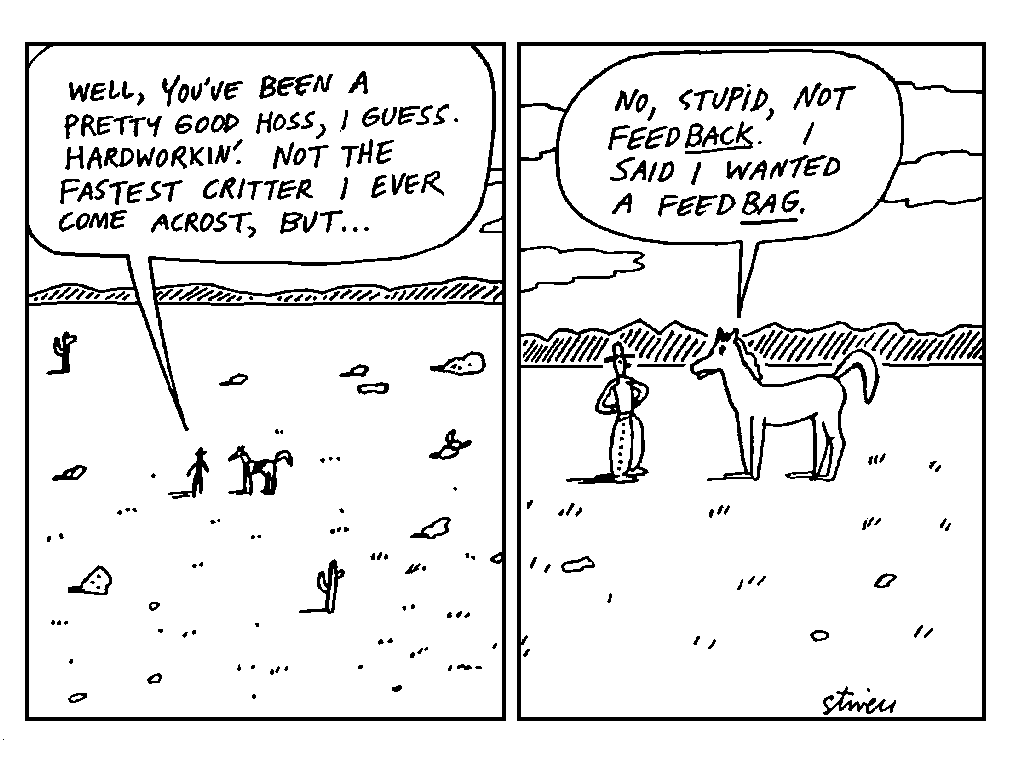You’re done your research and what you’ve found is going to require some dramatic changes. But how do you deliver your users’ feedback to the people involved in the project? It’s likely that some of the changes people have asked for are some of the people working on the project’s sacred cows. So giving feedback in the right way can be challenging and you need to manage the process so that you get the right outcome without causing major conflict with the folks you need to work with.
Before Giving Feedback
Before you give feedback; you should ensure that you have all your ducks in a row. You want to make certain that any claim you are going to present is backed with evidence. Where that evidence is weak – you may want to conduct a little more research or accept that it may be an area that you will have to give ground on during negotiations on behalf of your users.
You should prepare your audience prior to any meeting as best you can. That means circulating the issues that you intend to address and the evidence that supports them. The easiest way to get into an argument is to spring something on someone by surprise. Let them see the evidence and reflect on it.

Author/Copyright holder: Frits Ahlefeldt-Laurvig. Copyright terms and licence: CC BY-ND 2.0
Lastly, you should be prepared to listen to what other people have to say at the meeting. They may know something about the business objectives or technical feasibility of your suggestions that you don’t.
While Giving Feedback
Feedback should always be presented as an opportunity and not as a criticism of what has happened in the past. Giving feedback in an overly critical manner will leave people feeling angry and undervalued. Focus on what should be done in the future and not so much on the what has gone before.
Always actively listen. Repeat people’s feedback on the feedback to show that you have heard them and probe their responses to develop understanding. In some cases, you’re going to find that people are very much in support of your proposals and it should be easy to gather their ideas and use them to enhance the final recommendation.

Author/Copyright holder: Karl Horton. Copyright terms and licence: CC BY-SA 2.0
If people do become defensive; it’s best not to turn things into a shouting match. Try to focus people on the objective, which is improving the user experience, and not on issues of blame, etc.
You do not have to reach a final decision in a feedback meeting unless your project is on the clock and deadlines are immediate. You may need to give people some space to think about things prior to reaching a decision.

Author/Copyright holder: brandon schauer. Copyright terms and licence: CC BY-SA 2.0
Your best decisions are those that are reached in consensus. Your efforts should go towards reaching such a consensus. If this is not possible; you will have to ask the person with the ultimate responsibility for the project for a decision and then you will all have to live with that decision whichever way it goes.
Header Image: Author/Copyright holder: brandon schauer. Copyright terms and licence: CC BY-SA 2.0











